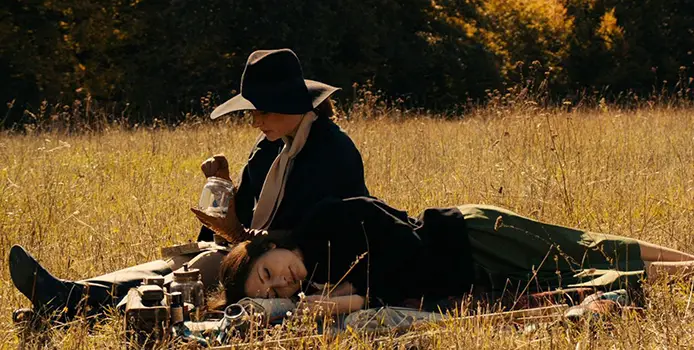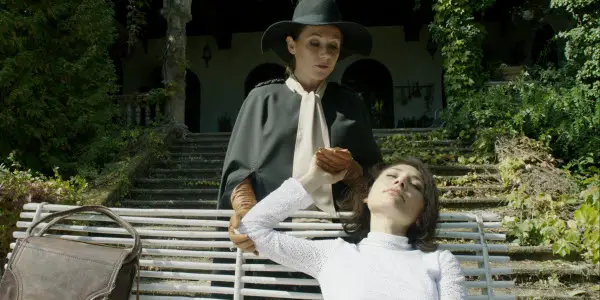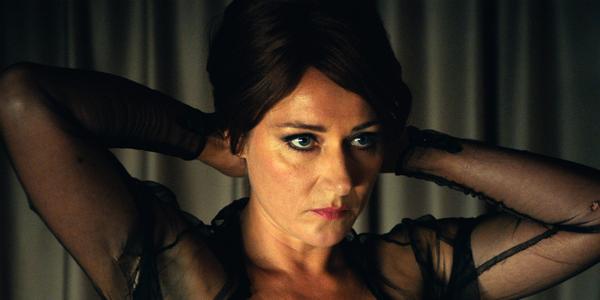THE DUKE OF BURGUNDY: A Truly Unique Relationship Drama

Alistair is a 25 year old writer based in Cambridge.…
The Duke of Burgundy is that rare thing that almost every movie promises, yet fails to deliver: it is something that you’ve never seen before. It manages to say something universal about the politics and gender roles of relationships using the guise of lesbian sadomasochism, a subject I assume will be entirely alien to most viewers. Most astonishingly, it also manages to depict the topic sensitively, without ever going graphic in detail or over-sensationalising it.
The Duke of Burgundy is remarkable in how much it under-sensationalises, presenting what could amount to (in a lesser filmmaker’s hands) borderline fetish-porn into something borderline mundane; it isn’t the sex that’s important, but rather how the assertion for dominance so inherent in the pair’s bedroom fantasies manifests itself in their relationship and how it threatens their ability to stay together as a happy unit. Even when it presents scenarios that more normally appear as conversation topics in a men’s locker room, it still manages to be frank and unashamed of its sexuality, without ever needing to justify it to an audience. It isn’t a stretch of the imagination to call this one of the most mature and even-handed movies ever made about sex.
A relationship drama like no other
The movie opens with Evelyn (Chiara D’Anna), going to a house of a woman named Cynthia (Sidse Babbett Knudsen), who appears to employ her as her house maid. She demands that Evelyn do tasks like hand-wash all her clothes and dust all the surfaces, punishing her with sexual humiliation if she does anything wrong. Evelyn and Cynthia are in fact a couple, and one that appears to have a happy relationship to casual onlookers. But both are miserable due to the sadomasochistic inclinations of their relationship; Cynthia doesn’t like that she has to abuse her lover, whilst Evelyn doesn’t like Cynthia’s reluctance to “punish” her to the full extent that she wants. Taking that synopsis at face-value doesn’t do the film justice – it manages to take overtly sexual scenarios and turn them into relationship problems that any couple in the audience can relate to.

Director Peter Strickland is best known for his previous feature Berberian Sound Studio. That movie was equally critically acclaimed, but left me feeling cold; it was a tribute to the Italian “giallo” slasher movies of the 70’s, yet abstracted the horror to such a point that it felt like the work of a film studies student trying to find the artistic merit in movies that register as nothing more than simple pleasures to begin with.
There is a moment in The Duke of Burgundy, a hyper-kinetic sequence involving butterflies, where it feels like he’s going to abstract the narrative in the same way, ruining the atmosphere he had created. Thankfully, that never full materialises – the movie is another genre tribute (this time to 70’s softcore Euro-porn), but manages to distance itself from the lurid hallmarks of its influences by actually taking the subject seriously. Strickland is a director who is at his best when he doesn’t subvert genre expectations, as his movies are far more interesting when staying as stylistically close to his influences as possible.
The Duke of Burgundy also manages to better Strickland‘s previous feature by never acting like it’s above the genre, instead working within the confines of it in order to make something thought-provoking out of what is unquestionably cinematic trash. Strickland never wants to titilate, even if this movie is undeniably the work of a director who is a fan of trashy 70’s porn. The scenarios may come straight from the top-shelf, but he is more interested in what happens to the characters after sex.
Here is a director with an inquisitive mind, one who seems to have spent too much time wondering what the relationships between a couple in a porn film would be like once the cameras have stopped rolling. Would they have a relationship as normal as everybody else, or would they be too defined by their sexual impulses to make it work? The fact that a movie about such a topic can play out like a conventional relationship drama is also due to the outstanding lead performance from Sidse Babett Knudsen.
Great performances make this weirdly relatable
In any other movie about S&M, we are always told that it is the dominant who holds the power; here, Babett Knudsen plays the role of Cynthia, a woman who is quietly breaking down from being forced into the dominating role by her partner Evelyn (Chiara D’Anna), when all she wants to do is express her love for her in conventional ways. She is essentially the audience surrogate; the movie never suggests that she actually finds the sex acts she has to perform erotic, just that she reluctantly performs them in order to maintain her relationship. Substitute the bizarre fetishes depicted here for more conventional relationship quabbles, from visiting your partner’s friends who you don’t get along with to watching the terrible TV shows they love, and it helps to make this one of the more insightful movies about the things people in relationships reluctantly do to ensure the spark remains well and truly alive.

In S&M themed movies, the man is always in the dominant position, which almost always leads to regressive gender politics when shown on-screen. Making this a relationship between two women is a masterstroke, even if the flirtations with lesbianism make it a clear successor to the aforementioned 70’s porn films. Paradoxically, it is also one of the elements that help make it most relatable, as sexual relationships between women are not stereotypically associated with the assertion for “power” that often defines sexual relationships for both straight and gay male couples.
This is what makes The Duke of Burgundy the most even-handed portrayal of S&M I’ve seen, as it could easily be interpreted that the person who holds the power in the relationship onscreen changes on a scene-by-scene basis. This may be a movie about physical engagement, but the complex nature of maintaining a happy relationship built around a mutual desire for “punishment” means the movie engages emotionally too. It’s a situation few viewers will be able to relate to, yet with two fantastic lead performances you can’t help but empathise with what is an unquestionably unrealistic scenario.
Verdict
Despite being set in an alternate universe where men don’t appear to exist, The Duke of Burgundy manages to have surprising emotional resonance beneath the stylistic artifice when it comes to depicting the sacrifices needed to be made to maintain a relationship. Peter Strickland may be a director more preoccupied with accurately capturing the style of cinema’s most disreputable genres (one of the first opening credits is for the lingerie designer, which makes you question the artistic validity of the movie you are about to watch), but that doesn’t mean he goes for style over substance. With The Duke of Burgundy he has created a movie about a topic that would otherwise prove laughable; were he not to take it seriously, he would expose the emotional wounds that are barely concealed underneath.
Have you seen the Duke of Burgundy and did you think it worked as a relationship drama?
The Duke of Burgundy was released earlier this year in the UK and US, but all international release dates can be found here.
(top image source: Artificial Eye)
Does content like this matter to you?
Become a Member and support film journalism. Unlock access to all of Film Inquiry`s great articles. Join a community of like-minded readers who are passionate about cinema - get access to our private members Network, give back to independent filmmakers, and more.
Alistair is a 25 year old writer based in Cambridge. He has been writing about film since the start of 2014, and in addition to Film Inquiry, regularly contributes to Gay Essential and The Digital Fix, with additional bylines in Film Stories, the BFI and Vague Visages. Because of his work for Film Inquiry, he is a recognised member of GALECA, the Gay & Lesbian Entertainment Critics' Association.













